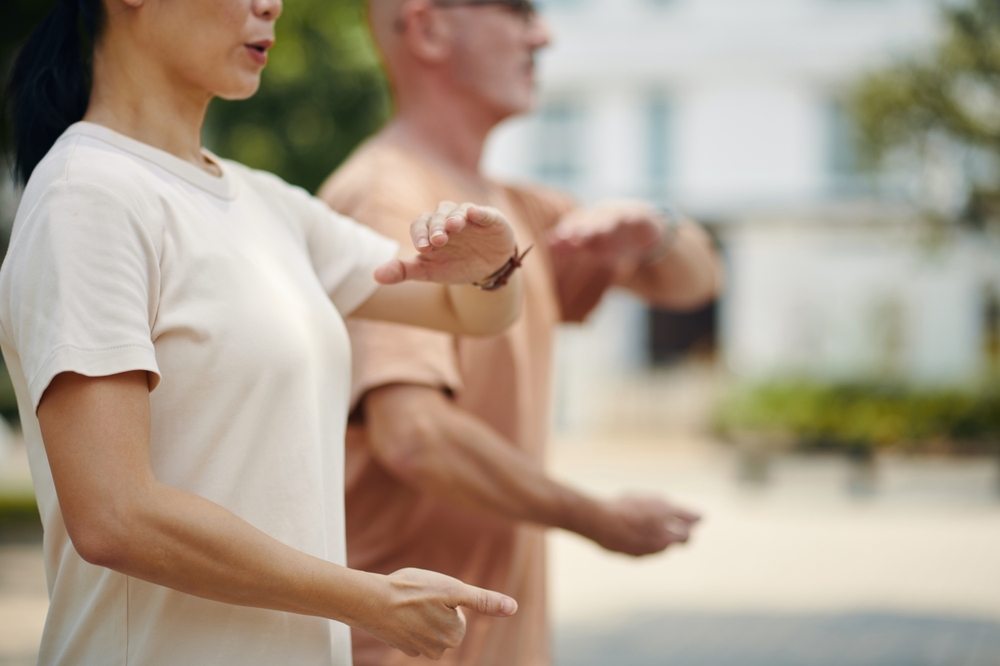Biophysics of Slackline Balancing: Unveiling the Science Behind the Art
Teetering on a thin strip of nylon suspended between two anchor points, slackliners captivate onlookers with their seemingly impossible feats of balance. This emerging sport combines elements of tightrope walking, gymnastics, and meditation, challenging practitioners to defy gravity and master their own bodies. But beneath the surface of this mesmerizing display lies a complex interplay of physics, biomechanics, and neuroscience that holds fascinating implications for human balance and motor control.

The sport’s accessibility and versatility have contributed to its rapid growth. Unlike traditional tightrope walking, which requires a taut cable, slacklines are intentionally loose, creating a dynamic surface that bounces and sways. This added instability presents unique challenges and opportunities for developing balance, core strength, and mental focus. Today, slacklining has evolved from a niche activity to a recognized sport with international competitions, dedicated gear manufacturers, and a growing body of scientific research exploring its physical and cognitive benefits.
The Physics of Instability: Understanding the Slackline System
At its core, slacklining is an exercise in managing instability. The fundamental challenge lies in the properties of the line itself – a narrow, flexible band typically made of nylon webbing. When a slackliner steps onto the line, several key physical principles come into play:
-
Tension and Sag: The line’s tension and the amount of sag (vertical displacement) are critical factors. Higher tension creates a more stable but less forgiving surface, while lower tension allows for more give but increases instability.
-
Oscillation: The slackline behaves like an underdamped oscillator, meaning that any movement tends to create sustained vibrations. These oscillations can be both helpful (allowing for bouncing and tricks) and challenging (requiring constant adjustments to maintain balance).
-
Center of Mass: The slackliner must constantly work to keep their center of mass (roughly located near the navel) directly above the line. Any deviation from this vertical alignment creates a moment arm that can quickly lead to loss of balance.
-
Friction: The interaction between the slackliner’s feet and the line involves complex frictional forces. Proper foot placement and pressure distribution are essential for maintaining control and initiating movements.
Understanding these physical principles is crucial for both practitioners and researchers seeking to unravel the biomechanical intricacies of slacklining.
Biomechanical Adaptations: How the Body Responds to the Line
Slacklining places unique demands on the human body, requiring rapid and precise adjustments to maintain balance. Several key biomechanical adaptations have been observed in experienced slackliners:
-
Postural Control Strategies: Research has shown that slackliners develop specific postural control strategies that differ from those used in normal standing. These include increased reliance on hip and upper body movements for balance corrections, as well as more pronounced ankle strategies for fine-tuning.
-
Muscular Activation Patterns: EMG studies have revealed distinct muscular activation patterns in slackliners, particularly in the lower legs and core. The tibialis anterior and gastrocnemius muscles show heightened activity and coordination to manage the line’s instability.
-
Joint Kinematics: Slacklining involves complex joint movements, especially in the ankles, knees, and hips. Experienced practitioners demonstrate greater ranges of motion and more fluid transitions between joint angles to maintain balance.
-
Proprioception and Sensory Integration: The sport demands heightened proprioceptive awareness and rapid integration of visual, vestibular, and somatosensory information. Studies suggest that regular slacklining practice can lead to improvements in overall balance and proprioception.
These biomechanical adaptations not only allow for improved performance on the slackline but may also have broader implications for balance training and rehabilitation in various populations.
Neurocognitive Aspects: Rewiring the Brain for Balance
Beyond the physical adaptations, slacklining has been shown to induce significant changes in neural processing and cognitive function. Several key areas of neuroscience research have emerged:
-
Motor Learning and Plasticity: The acquisition of slacklining skills involves complex motor learning processes. Neuroimaging studies have revealed changes in brain activation patterns and increased gray matter density in areas associated with balance and motor control following slackline training.
-
Attentional Focus: Maintaining balance on a slackline requires a high degree of focused attention. Research suggests that regular practice may enhance attentional control and the ability to filter out distractions.
-
Vestibular Processing: The vestibular system plays a crucial role in balance and spatial orientation. Slacklining has been shown to enhance vestibular processing and integration, potentially leading to improved overall balance performance.
-
Cognitive-Motor Interference: Slacklining provides a unique platform for studying cognitive-motor interference, as practitioners must often perform cognitive tasks while balancing. This research has implications for understanding how the brain manages competing demands on attention and motor control.
The neurocognitive benefits of slacklining extend beyond the sport itself, with potential applications in areas such as fall prevention in older adults, rehabilitation for neurological disorders, and general cognitive enhancement.
Applications and Future Directions: Beyond the Line
The insights gained from studying the biophysics of slacklining have far-reaching implications across various fields:
-
Sports Performance: The balance and proprioceptive skills developed through slacklining can benefit athletes in many other sports, from surfing to skiing to martial arts.
-
Rehabilitation: Slackline-based therapies are being explored for conditions ranging from stroke recovery to chronic ankle instability, leveraging the sport’s unique challenges to promote neuroplasticity and functional improvement.
-
Fall Prevention: As populations age globally, the potential for slacklining-inspired balance training to reduce fall risk in older adults is an area of active research.
-
Cognitive Enhancement: The cognitive demands of slacklining, particularly in dual-task scenarios, suggest potential benefits for general cognitive function and attentional control.
-
Biomechanical Modeling: The complex dynamics of the slackline system provide a rich testing ground for advanced biomechanical models, potentially informing broader understanding of human balance and locomotion.
-
Wearable Technology: The precise balance requirements of slacklining are driving innovations in sensor technology and real-time feedback systems for balance assessment and training.
As research in this field continues to evolve, the humble slackline is proving to be a powerful tool for unlocking new insights into human movement, balance, and cognition.
Balancing Act of Science and Sport
The biophysics of slackline balancing represents a fascinating intersection of physics, biomechanics, and neuroscience. What began as a simple pastime for rock climbers has evolved into a rich field of scientific inquiry, offering valuable insights into human balance, motor control, and cognitive function. As researchers continue to unravel the complexities of this seemingly simple act of walking on a thin line, the implications extend far beyond the sport itself.
From enhancing athletic performance to developing new rehabilitation strategies, the lessons learned from slacklining are reshaping our understanding of human movement and balance. The unique challenges presented by the dynamic slackline environment push the boundaries of our knowledge about how the body and brain work together to maintain stability in unstable conditions.
As we look to the future, the study of slackline balancing promises to continue yielding valuable insights. The integration of advanced technologies, such as motion capture systems and neuroimaging, will allow for even more precise analysis of the biomechanical and neural processes involved. Furthermore, the potential applications of slackline-inspired training and therapy in areas like fall prevention and cognitive enhancement offer exciting possibilities for improving quality of life across diverse populations.
In essence, the art of slacklining serves as a compelling reminder of the human body’s remarkable capacity for adaptation and the intricate dance between physics, physiology, and psychology that underlies even the simplest of movements. As both a sport and a scientific pursuit, slacklining continues to challenge our understanding of balance, pushing us to new heights of knowledge and performance.





